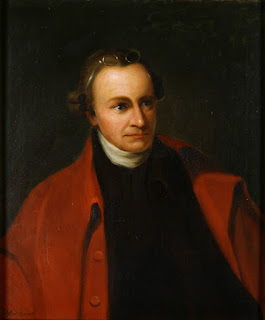General John (“Gentleman
Johnny”) Burgoyne surrendered a British Army at Saratoga, New York in October,
1777. The surrender terms documented in the “Convention of Saratoga,” called
for 5,900 British and German troops to march to Boston where they would be
shipped to England, with a pledge not to fight against the Americans again. The
Continental Congress found a way to thwart the surrender terms and keep the
prisoners. Congress insisted that the
surrender articles be ratified by “the
King and Parliament.” This was an
impossible condition since it implied British recognition of the legitimacy of
the Congress and the independence of America.
In November 1778, the Convention Army
prisoners began a seven hundred mile march from Boston to Virginia. They were divided into six divisions, each
marching one day behind the other. The
prisoners crossed the Potomac River in late 1778 and passed through Leesburg,
Prince William County, Warrenton, Culpeper County, and Orange Court House, before
reaching Charlottesville, their final destination. At Charlottesville, the prisoners built
wooden huts, on what is today called Barracks Road.
While the common soldiers
lived rough, the British and German officers were able to pay to rent private
accommodations. British General William
Phillips and the Hessian commander Baron Frederick von Riedesel were treated
more as guests than as prisoners. Thomas
Jefferson played the violin with Baron Frederick von Riedesel at
Monticello. Baron Frederick von Riedesel
and General William Phillips were later exchanged for General Benjamin Lincoln.
Murder in Colonial Virginia























.jpg)



.jpg)

